Earth
ID: 3491
According to measurements taken with a satellite instrument, vast quantities of industrial aerosols and smoke from biomass burning in East Asia and Russia are traveling from one side of the globe to another. Explosive economic growth in Asia has profound implications for the atmosphere worldwide. Data collected by a NASA satellite shows a dense blanket of polluted air over the Northwestern Pacific. This brown cloud is a toxic mix of ash, acids, and airborne particles from car and factory emissions, as well as from low-tech polluters like coal-burning stoves and from forest fires. This image generated by data from NASA's instrument called MODIS (Moderate Resolution Imaging Spectroradiometer) onboard the Terra satellite demonstrates how large and pervasive this transport phenomenon is across vast areas. China's exports fill shelves around the world, but according to a new NASA research paper, China also heavily exports pollution. This week, space agency scientists reveal how Chinese industrialization and Russian forest fires in combination with pollution transported eastward from Europe send roughly 18 teragrams - almost 40 billion pounds-of pollution aerosols into the atmosphere over the Northwestern Pacific every year. The MODIS instrument on NASA's Terra satellite has been tracking the particulate pollution for more than seven years, gathering data as most of it drifted east across the Pacific Ocean. About 4.5 teragrams of particulate pollution each year could reach the western boundary of North America, which is about 15% of local emissions of particulate pollutants from the U.S. and Canada. In the last two decades, China has more than doubled its pollution production. This boom may be contributing to substantial changes in climate and weather in places far from the origin of the particulates. Never in human history-anywhere-has there been industrial growth like that in modern China. But with fast growth comes unintended consequences, and from space evidence of those consequences is starting to emerge. The research relies on measurements of something called "aerosol optical thickness". It's a quantitative measurement about how well a slice of atmosphere transmits light. The greater the value of optical thickness for a given location, the less light of a particular wavelength can pass through it. Measurements of aerosol optical thickness describe quantities of tiny particles in a given volume. By measuring how much light can penetrate a region of atmosphere across a variety of wavelengths, scientists can make certain inferences about the quantity and type of particles blocking that light. This visualization shows the seasonal variations of transport of pollution aerosols across the North Pacific. The East Asian airstream carries its largest pollution loading in spring and smallest in summer and fall. With heavy concentrations of aerosols represented by shades of brown, scientists can track the origins and distribution of the particles as they travel in the atmosphere. The sequence also shows a trail of substantial aerosol concentrations from a variety of sources. These sources include heavy industrial activity in East Asia associated with high population density represented in this sequence by gradations of black covering the land surface, and intense Russian forest fires in high latitudes.
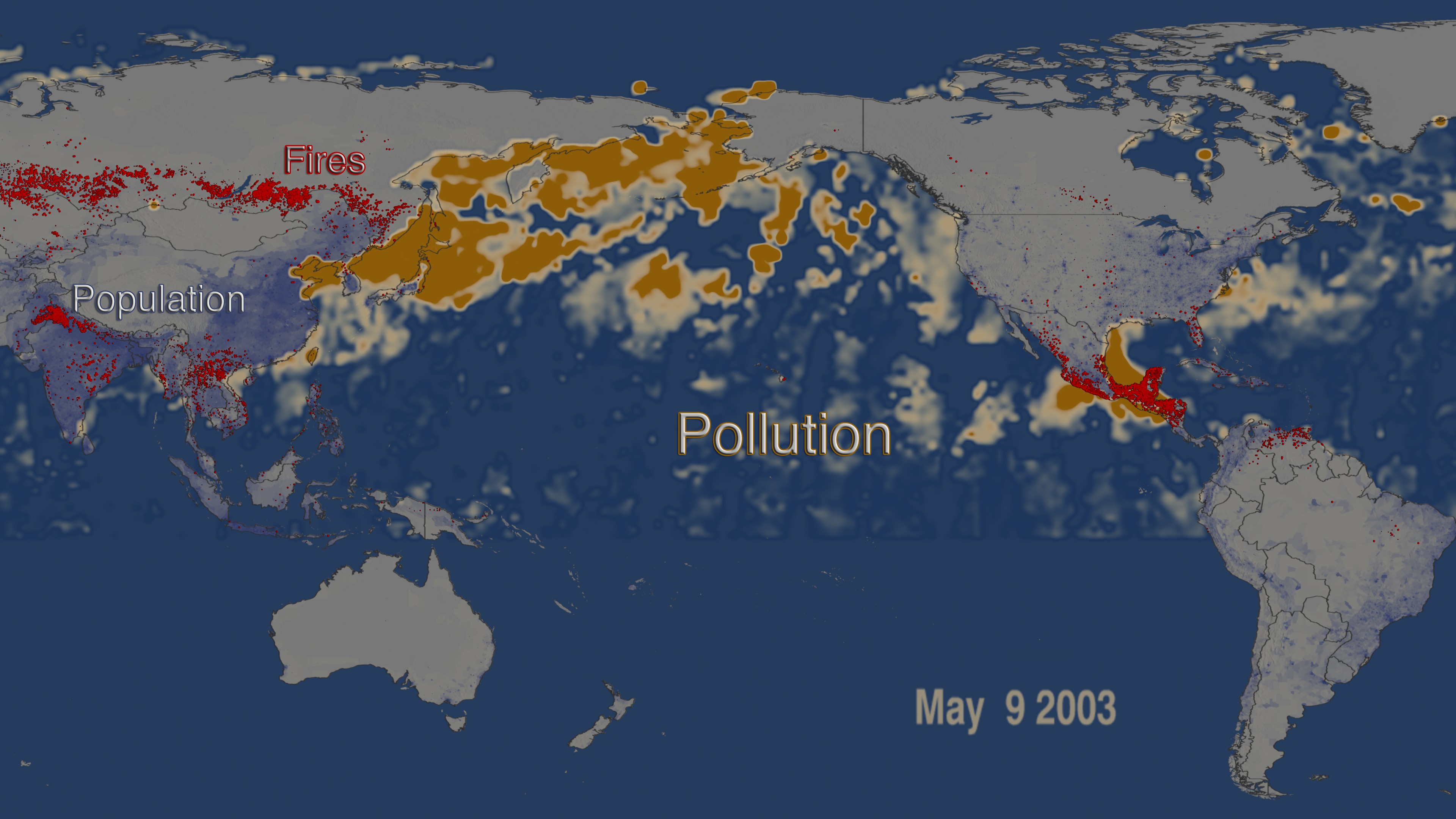

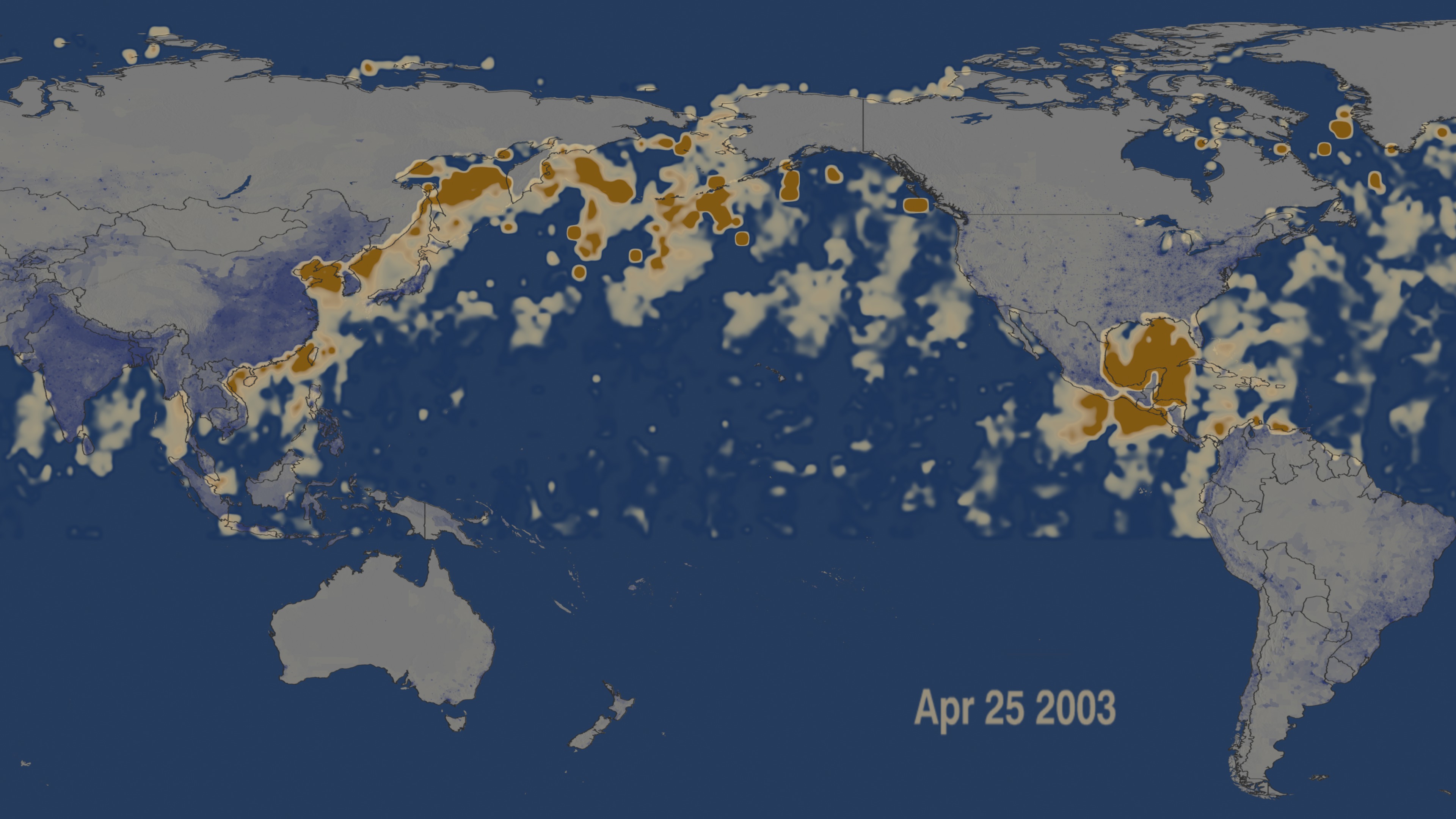
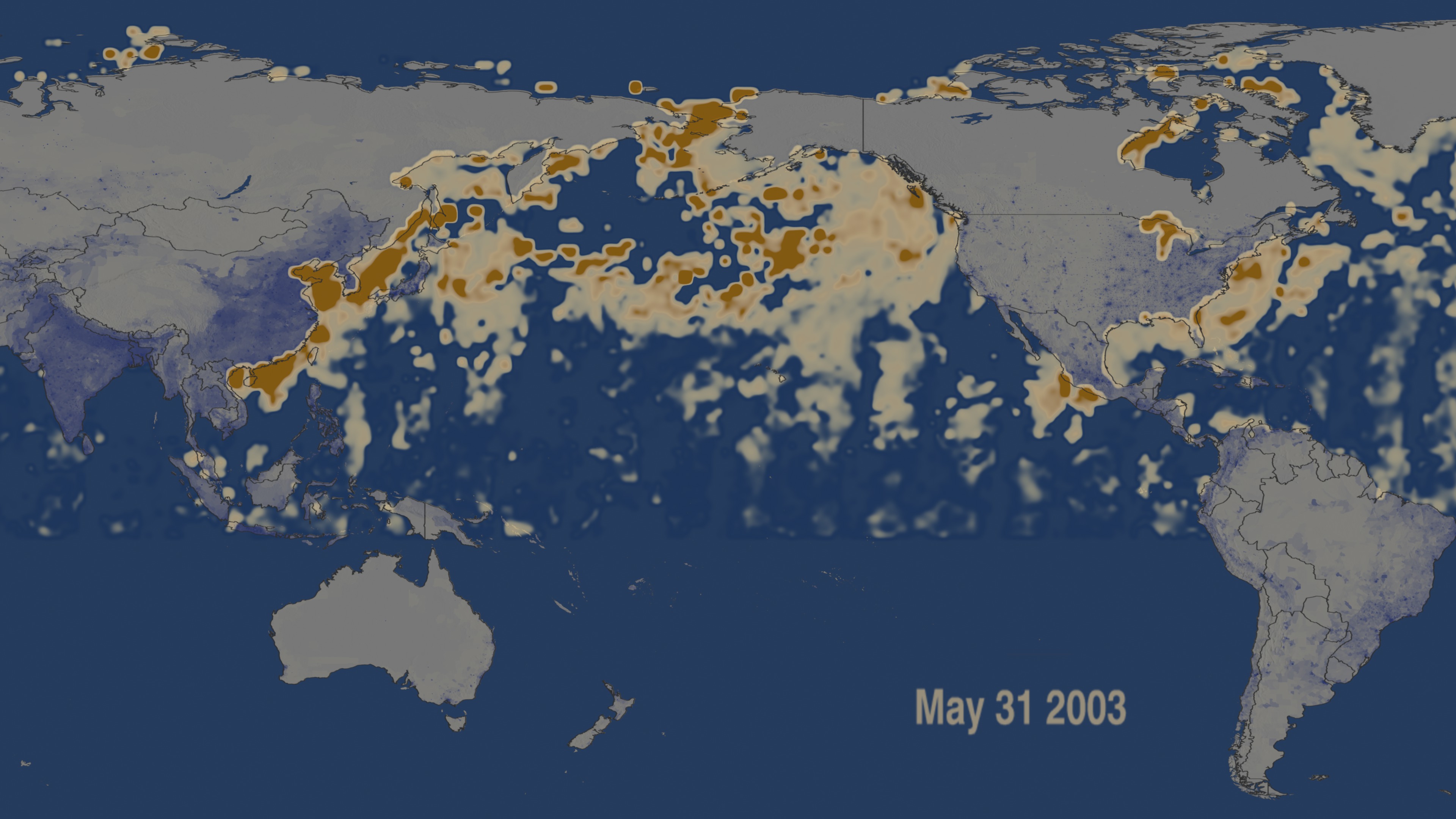
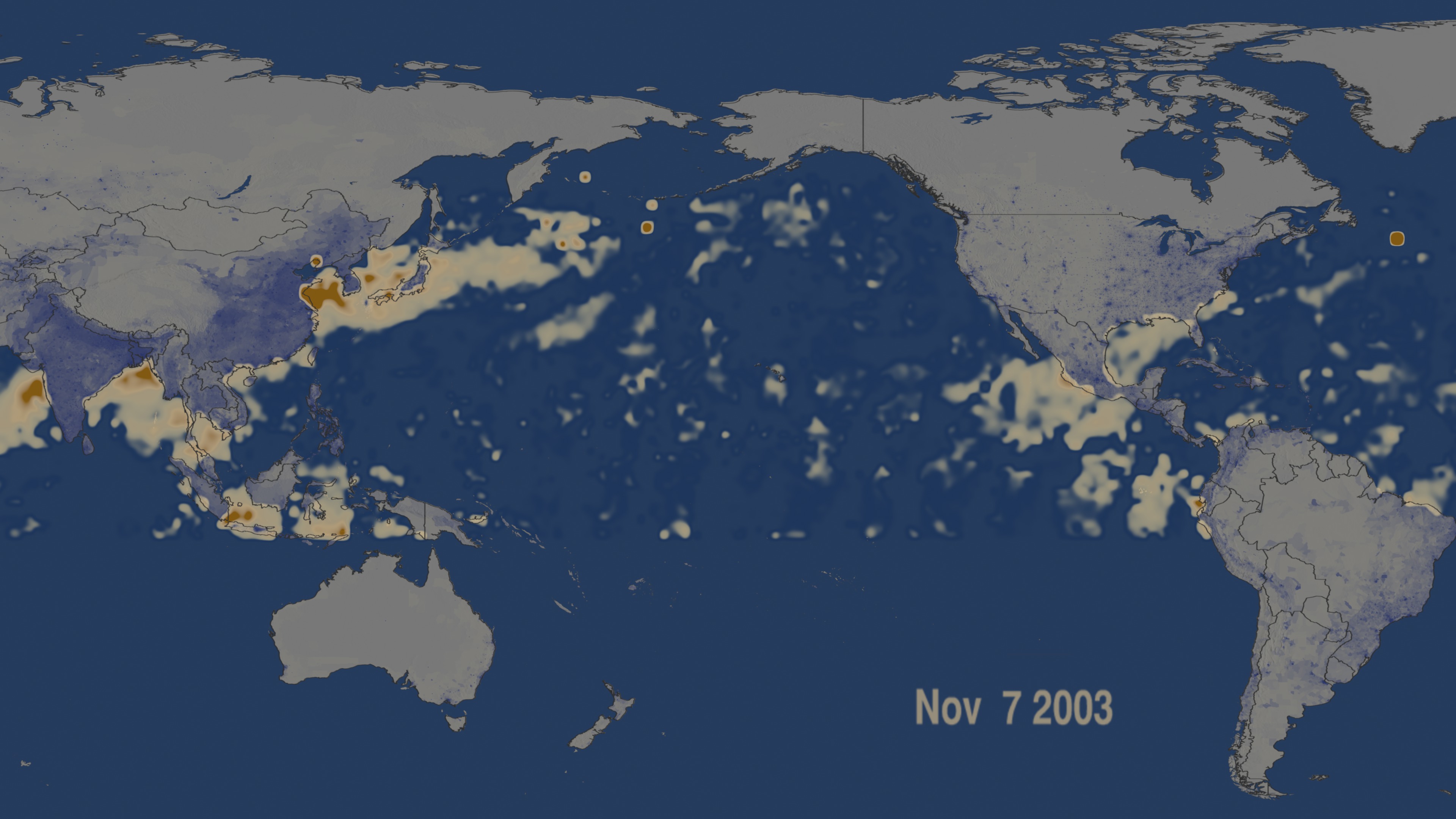
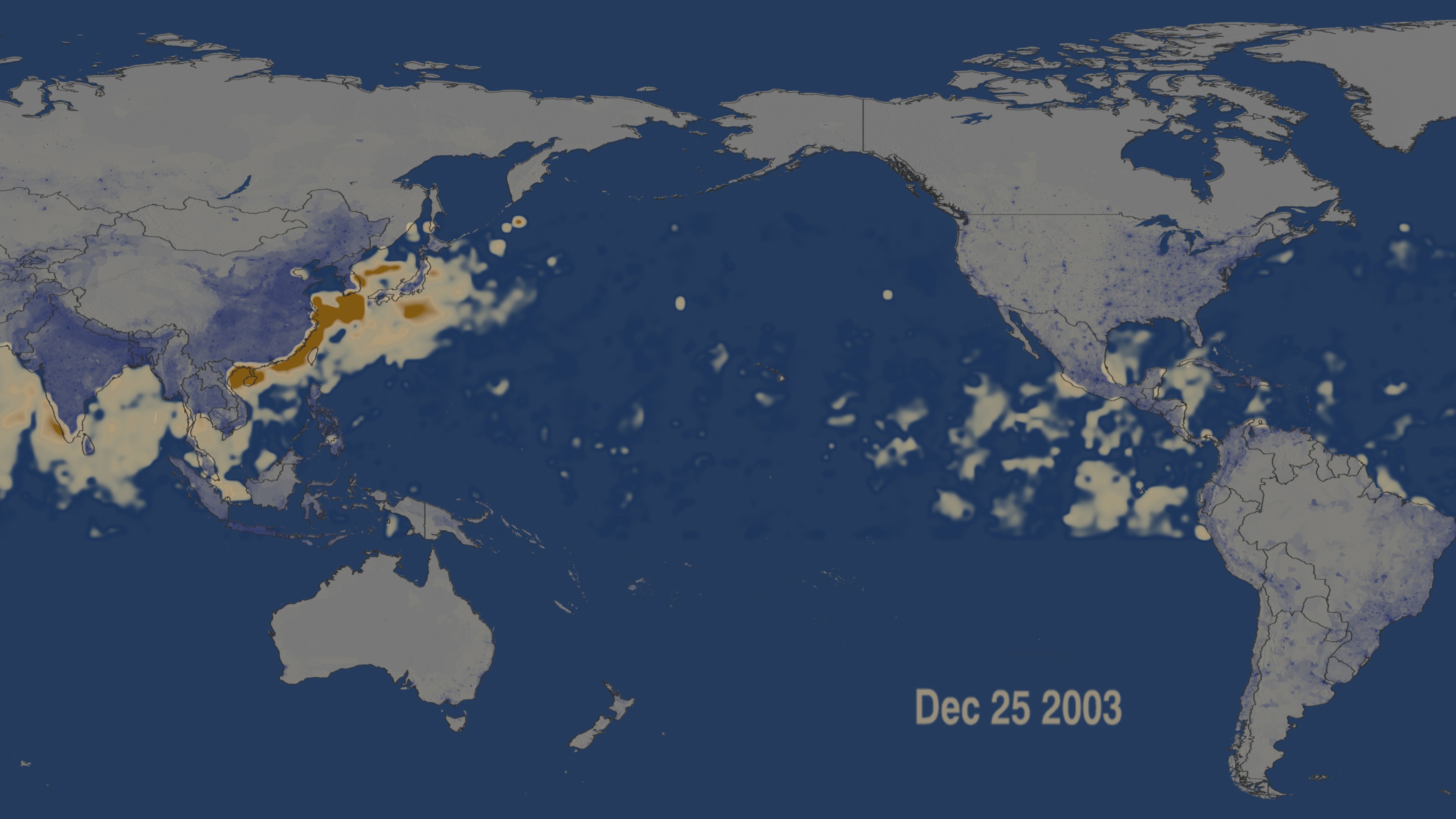
Pacific Anthropogenic Aerosol Optical Depth (AOD) in 2003






Visualization Credits
Lori Perkins (NASA/GSFC): Lead Animator
Michael Starobin (HTSI): Producer
Hongbin Yu (JCET UMBC): Scientist
Michael Starobin (HTSI): Writer
Michael Starobin (HTSI): Producer
Hongbin Yu (JCET UMBC): Scientist
Michael Starobin (HTSI): Writer
Please give credit for this item to:
NASA/Goddard Space Flight Center Scientific Visualization Studio
NASA/Goddard Space Flight Center Scientific Visualization Studio
Short URL to share this page:
https://svs.gsfc.nasa.gov/3491
Mission:
Terra
Data Used:
Note: While we identify the data sets used in these visualizations, we do not store any further details nor the data sets themselves on our site.
Dates of Data Used:
2003/1 - 365
This item is part of this series:
Aerosols and Warming
Goddard TV Tape:
G2008-047 -- Glory Resource Reel
Keywords:
DLESE >> Atmospheric science
SVS >> Dust
SVS >> HDTV
SVS >> Pacific
SVS >> Pollution
SVS >> Population growth
GCMD >> Earth Science >> Atmosphere >> Aerosols
GCMD >> Earth Science >> Human Dimensions >> Environmental Impacts >> Urbanization
GCMD >> Location >> Russia
GCMD >> Location >> Asia
SVS >> Copenhagen
SVS >> For Educators
SVS >> Pollution >> Distribution
SVS >> Greenhouse Gases
SVS >> Pollutants >> Concentration
SVS >> Pollutants >> Distribution
SVS >> Atmospheric Conditions
NASA Science >> Earth
GCMD keywords can be found on the Internet with the following citation: Olsen, L.M., G. Major, K. Shein, J. Scialdone, S. Ritz, T. Stevens, M. Morahan, A. Aleman, R. Vogel, S. Leicester, H. Weir, M. Meaux, S. Grebas, C.Solomon, M. Holland, T. Northcutt, R. A. Restrepo, R. Bilodeau, 2013. NASA/Global Change Master Directory (GCMD) Earth Science Keywords. Version 8.0.0.0.0
Places you might have seen this:
http://www.sciencedaily.com/releases/2008/03/080317164336.htm
https://svs.gsfc.nasa.gov/3491
Mission:
Terra
Data Used:
Terra/MODIS/Anthropogenic Aerosol Optical Depth
2003/1 - 365Dates of Data Used:
2003/1 - 365
This item is part of this series:
Aerosols and Warming
Goddard TV Tape:
G2008-047 -- Glory Resource Reel
Keywords:
DLESE >> Atmospheric science
SVS >> Dust
SVS >> HDTV
SVS >> Pacific
SVS >> Pollution
SVS >> Population growth
GCMD >> Earth Science >> Atmosphere >> Aerosols
GCMD >> Earth Science >> Human Dimensions >> Environmental Impacts >> Urbanization
GCMD >> Location >> Russia
GCMD >> Location >> Asia
SVS >> Copenhagen
SVS >> For Educators
SVS >> Pollution >> Distribution
SVS >> Greenhouse Gases
SVS >> Pollutants >> Concentration
SVS >> Pollutants >> Distribution
SVS >> Atmospheric Conditions
NASA Science >> Earth
GCMD keywords can be found on the Internet with the following citation: Olsen, L.M., G. Major, K. Shein, J. Scialdone, S. Ritz, T. Stevens, M. Morahan, A. Aleman, R. Vogel, S. Leicester, H. Weir, M. Meaux, S. Grebas, C.Solomon, M. Holland, T. Northcutt, R. A. Restrepo, R. Bilodeau, 2013. NASA/Global Change Master Directory (GCMD) Earth Science Keywords. Version 8.0.0.0.0
Places you might have seen this:
http://www.sciencedaily.com/releases/2008/03/080317164336.htm











